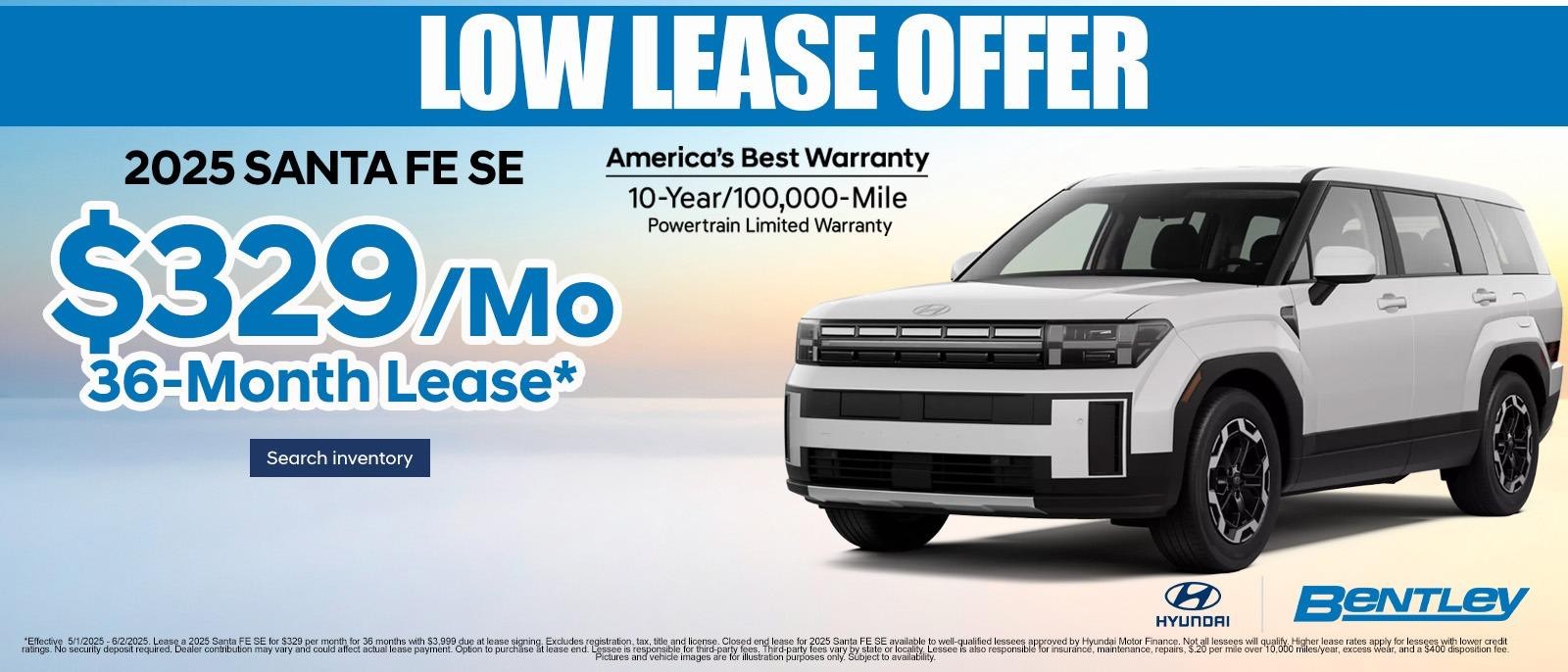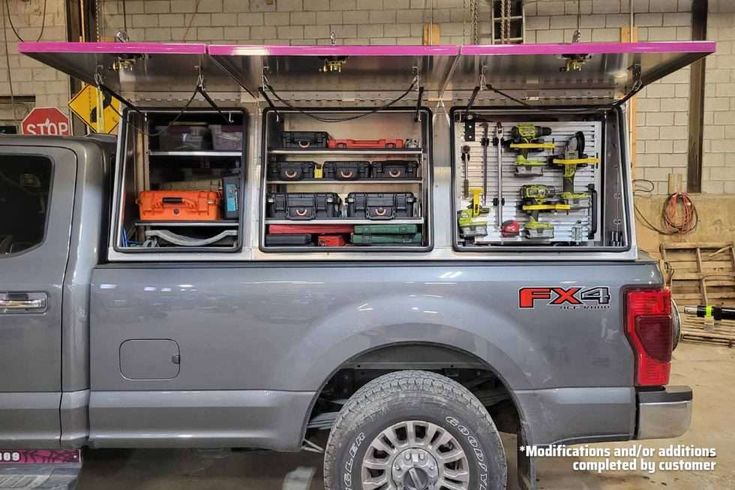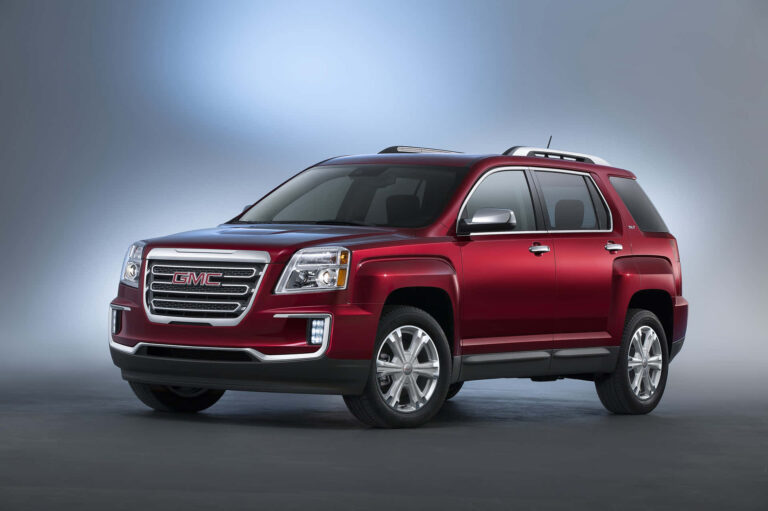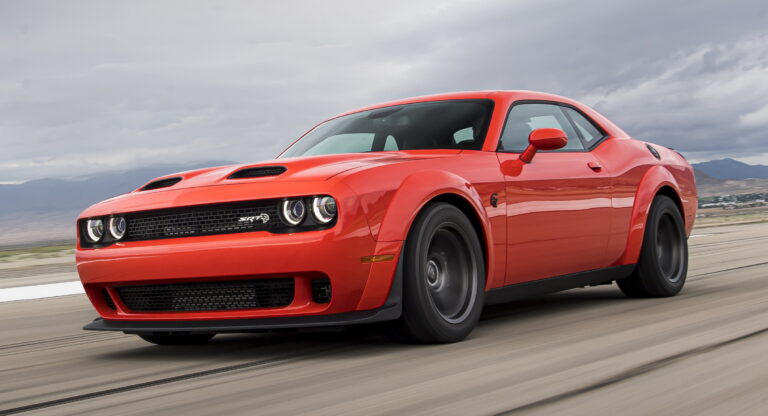Loaner Trucks For Sale: Your Guide to Unlocking Premium Value
Loaner Trucks For Sale: Your Guide to Unlocking Premium Value cars.truckstrend.com
In the vast and often perplexing world of automotive purchases, savvy buyers are always on the hunt for that sweet spot: a vehicle that offers near-new quality without the full new-car price tag. Enter the "loaner truck for sale" – a category of vehicles that often flies under the radar but presents a remarkable opportunity for informed consumers. These aren’t your typical pre-owned trucks; they occupy a unique niche, bridging the gap between brand-new and traditional used vehicles. Understanding what they are, how they’re managed, and how to acquire one can save you thousands of dollars while still putting you behind the wheel of a modern, well-maintained pickup.
This comprehensive guide will define loaner trucks, explore their distinct advantages, equip you with the knowledge to find and purchase one, highlight critical considerations, and provide actionable insights to ensure a smart investment.
Loaner Trucks For Sale: Your Guide to Unlocking Premium Value
What Exactly Are Loaner Trucks?
At its core, a loaner truck (also known as a "courtesy vehicle" or "service loaner") is a vehicle owned by a dealership and provided to customers whose personal vehicles are undergoing service or repairs. Instead of leaving a customer without transportation, dealerships offer these temporary replacements. This practice serves multiple purposes: it enhances customer satisfaction, keeps clients mobile, and allows the dealership to showcase its latest models.
Unlike rental cars, which are often driven aggressively by a wide range of individuals and accumulate significant mileage, loaner trucks are typically used for shorter durations, primarily for commuting or essential errands. Dealerships maintain these vehicles meticulously, adhering strictly to manufacturer-recommended service schedules, as they represent the dealership’s brand and are ultimately destined for resale. Once they reach a certain mileage threshold (often between 3,000 to 20,000 miles) or a specific age, they are pulled from the loaner fleet and made available for sale to the public, often at a substantial discount.
The Allure of Loaner Trucks: Key Benefits for Buyers
The appeal of a loaner truck extends far beyond a simple price reduction. They offer a compelling package of advantages that make them highly attractive:
- Exceptional Value Proposition: This is arguably the biggest draw. Loaner trucks are priced significantly lower than their brand-new counterparts, often reflecting a depreciation equivalent to a couple of years of ownership, despite being only months old. This immediate depreciation savings is passed directly to the buyer.
- Meticulous Maintenance Records: Because these trucks are dealership assets, they receive top-tier, routine maintenance by certified technicians. Every oil change, tire rotation, and inspection is performed precisely when due, and often logged in detail. This provides buyers with a transparent and robust service history, a rarity in the used car market.
- Low Mileage (Generally): While not brand new, loaner trucks typically boast very low mileage for their age. They haven’t endured years of daily commutes or heavy use, meaning less wear and tear on critical components.
- Remaining Manufacturer Warranty: A significant advantage is that most loaner trucks are still under the original factory warranty (bumper-to-bumper and powertrain). This provides peace of mind, covering potential issues that might arise shortly after purchase, just as it would for a brand-new vehicle. Many are also eligible for Certified Pre-Owned (CPO) programs, which extend the factory warranty and include additional benefits.
- Latest Features and Technology: Loaner fleets are usually comprised of the current or most recent model year vehicles. This means buyers gain access to modern safety features, infotainment systems, fuel-efficient engines, and the latest design aesthetics without paying the premium of a completely new vehicle.
- Dealership Incentives and Financing: Dealerships are motivated to move these vehicles quickly. This can translate into special financing rates, extended warranty offers, or other incentives that might not be available on other used vehicles.


Navigating the Market: How to Find and Buy a Loaner Truck
Acquiring a loaner truck requires a slightly different approach than buying a new or typical used vehicle. Here’s a step-by-step guide:
- Identify Potential Dealerships: Start by looking for larger dealerships, especially those part of a major automotive group, as they are more likely to have dedicated loaner fleets. Brands like Ford, Ram, Chevrolet, Toyota, and Nissan are common.
- Online Search Strategy: Use specific keywords on dealership websites and major online car marketplaces (e.g., AutoTrader, Cars.com). Search terms like "courtesy vehicle," "service loaner," "dealer demo," "program vehicle," or "executive demo" in addition to "used trucks." Often, these vehicles will be listed under the "used" or "pre-owned" sections but will have a specific designation in their description.
- Direct Inquiry: Don’t hesitate to call or visit the sales department of local dealerships and explicitly ask about their loaner truck inventory. Sometimes, vehicles are available for sale even before they are officially listed online.
- Thorough Inspection: Once you find a potential candidate, inspect it meticulously. While generally well-maintained, loaners are driven by multiple people. Look for minor cosmetic imperfections: small door dings, scuffs on the bumper, or slight wear on the interior upholstery. Pay attention to the tires and brakes – while serviced, multiple drivers can impact their wear patterns.
- Review Service Records: Request a complete printout of the vehicle’s service history from the dealership. Verify that all scheduled maintenance has been performed. This is crucial for confirming the vehicle’s health and preserving warranty coverage.
- Get a Vehicle History Report: Always obtain a CarFax or AutoCheck report. This will confirm the vehicle’s ownership history (it should show the dealership as the sole owner), verify it hasn’t been in any reported accidents, and confirm the odometer reading.
- Test Drive Extensively: Take the truck for a comprehensive test drive, ideally on varying road conditions. Listen for unusual noises, check the transmission’s shifting, and test all electronic features, climate control, and infotainment systems.
- Negotiation: Remember that loaner trucks are still used vehicles, and there’s always room for negotiation. Research market values for similar used trucks (considering mileage and condition) and be prepared to make an informed offer. Leverage any minor cosmetic issues you found during your inspection as negotiation points.
- Understand Warranty and CPO Options: Clarify exactly what factory warranty remains. If the truck is eligible for a Certified Pre-Owned program, understand the benefits and any additional cost associated with it. CPO programs often provide extended warranty coverage and roadside assistance, adding significant value.

Important Considerations Before You Buy
While loaner trucks offer compelling benefits, a few considerations warrant your attention:
- Variable Mileage and Usage: While generally low, mileage can vary. A truck used frequently for longer trips might have more miles than one used only for short hops. Assess if the mileage aligns with your expectations for a "nearly new" vehicle.
- Cosmetic Imperfections: Multiple drivers, even careful ones, can lead to minor scuffs, small dents, or interior wear that might not be present on a truly brand-new vehicle. Be realistic about these minor blemishes; they are often the trade-off for significant savings.
- "Break-in" Period: Some drivers are meticulous about following break-in procedures for new engines, while others are not. While modern engines are robust, it’s a minor consideration that multiple drivers may not have adhered to specific break-in guidelines.
- Configuration Limitations: Loaner fleets typically consist of popular trim levels and configurations. If you have very specific requirements for features, engine type, or color, your options might be more limited than if you were ordering a new truck.
Types and Categories of Loaner Trucks
Loaner truck inventories typically reflect the most popular models and configurations that dealerships sell. You’ll most commonly find:
- Light-Duty Full-Size Pickups: These are the backbone of most loaner fleets. Expect to see models like the Ford F-150, Ram 1500, Chevrolet Silverado 1500, and GMC Sierra 1500. They usually come in popular trims (e.g., Ford XLT/Lariat, Ram Big Horn/Laramie, Chevy LT/RST) with crew cabs and V6 or V8 engines.
- Mid-Size Pickups: Increasingly popular, mid-size trucks like the Toyota Tacoma, Chevrolet Colorado, Nissan Frontier, and Ford Ranger also make appearances as loaners, especially for customers who typically drive smaller vehicles.
- Heavy-Duty Pickups: While less common due to their higher cost and specialized use, some dealerships with a strong commercial client base might have F-250/350, Ram 2500/3500, or Silverado/Sierra 2500/3500 models as loaners for their business customers. These are rarer finds but can represent exceptional value.
Tips for a Successful Loaner Truck Purchase
- Be Patient and Persistent: The supply of loaner trucks fluctuates. If you don’t find what you’re looking for immediately, keep checking dealership websites and maintain contact with sales representatives.
- Don’t Be Afraid to Negotiate: Even with reduced prices, negotiation is still possible. Research comparable sales and be prepared to walk away if the deal isn’t right.
- Consider an Independent Inspection: For ultimate peace of mind, especially if you’re not mechanically inclined, invest in a pre-purchase inspection by an independent mechanic. They can often spot issues missed by the dealership’s inspection.
- Understand the CPO Program: If the truck qualifies for a Certified Pre-Owned program, fully understand its benefits, extended warranty terms, and any associated costs. It can add significant long-term value.
- Ask About Special Sales Events: Dealerships sometimes hold specific sales events for their loaner or program vehicles to clear inventory. Inquire if any such events are upcoming.
Potential Challenges and How to Overcome Them
- Limited Availability: Unlike new cars, you can’t order a loaner truck to your exact specifications.
- Solution: Be flexible with color or minor features. Expand your search to multiple dealerships or be prepared to wait for the right vehicle to become available.
- Perception of "Used and Abused": Some buyers worry about how multiple drivers might have treated the vehicle.
- Solution: Rely on the comprehensive service history, vehicle history report, and your own thorough inspection/test drive. The fact that these are dealership assets means they’re usually well-cared for.
- Minor Cosmetic Imperfections: You might find a small ding or scratch that wouldn’t be on a new vehicle.
- Solution: Accept these as part of the savings. You can often use them as a minor negotiation point. For significant issues, ask for them to be repaired before purchase or for a further discount.
- Finding the Exact Trim/Configuration: Dealerships stock popular trims as loaners, so highly specialized versions might be rare.
- Solution: Prioritize essential features and be willing to compromise on less critical ones. If a specific feature is a must-have, you might need to broaden your search or consider a new vehicle.
Estimated Price Table for Loaner Trucks For Sale
It’s important to note that actual prices for loaner trucks vary widely based on make, model, year, trim level, mileage, condition, dealership, and regional market demand. The table below provides estimated ranges to illustrate the potential savings compared to a new truck of a similar configuration. These figures are illustrative and should not be taken as definitive quotes.
| Make/Model (Example Trim) | Year | Est. Mileage Range | Est. New MSRP | Est. Loaner Price Range | Est. Savings (%) | Key Features (Example) | Warranty Status (Typical) |
|---|---|---|---|---|---|---|---|
| Ford F-150 XLT (SuperCrew) | 2023 | 5,000 – 18,000 | $55,000 – $65,000 | $45,000 – $58,000 | 10% – 20% | 2.7L EcoBoost, Sync 4, Co-Pilot360 | Balance of 3yr/36k Bumper-to-Bumper, 5yr/60k Powertrain |
| Ram 1500 Big Horn (Quad Cab) | 2023 | 7,000 – 20,000 | $52,000 – $62,000 | $42,000 – $55,000 | 10% – 20% | 3.6L V6 eTorque, Uconnect 5, Rear Camera | Balance of 3yr/36k Bumper-to-Bumper, 5yr/60k Powertrain |
| Chevy Silverado LT (Crew Cab) | 2023 | 6,000 – 19,000 | $54,000 – $64,000 | $44,000 – $57,000 | 10% – 20% | 5.3L V8, Infotainment, Lane Keep Assist | Balance of 3yr/36k Bumper-to-Bumper, 5yr/60k Powertrain |
| Toyota Tacoma SR5 (Double Cab) | 2023 | 4,000 – 15,000 | $40,000 – $48,000 | $34,000 – $42,000 | 10% – 15% | V6 Engine, Toyota Safety Sense, Apple CarPlay | Balance of 3yr/36k Bumper-to-Bumper, 5yr/60k Powertrain |
| GMC Sierra 1500 SLE (Crew Cab) | 2023 | 5,000 – 17,000 | $56,000 – $66,000 | $46,000 – $59,000 | 10% – 20% | 5.3L V8, ProGrade Trailering, Heated Seats | Balance of 3yr/36k Bumper-to-Bumper, 5yr/60k Powertrain |
Disclaimer: All figures in this table are approximate estimates for illustration purposes only. Actual prices, features, and warranty terms will vary based on specific vehicle condition, dealer policies, and market dynamics. Always confirm all details with the selling dealership.
Frequently Asked Questions (FAQ) About Loaner Trucks For Sale
Q1: What exactly is a "loaner truck for sale"?
A1: A loaner truck (or courtesy vehicle) is a pickup truck owned by a dealership and temporarily lent to customers whose personal vehicles are being serviced. Once it reaches a certain mileage or age, the dealership sells it as a pre-owned vehicle, often at a discount.
Q2: Are loaner trucks reliable?
A2: Generally, yes. Loaner trucks are meticulously maintained by the dealership’s certified technicians according to manufacturer schedules. This often means they have a more thorough and documented service history than many other used vehicles.
Q3: Do loaner trucks come with a warranty?
A3: Most loaner trucks are still under the original manufacturer’s factory warranty (bumper-to-bumper and powertrain) due to their low mileage and recent model year. Many are also eligible for the dealership’s Certified Pre-Owned (CPO) program, which can extend the warranty further.
Q4: Is the mileage usually high on loaner trucks?
A4: No, typically loaner trucks have relatively low mileage, often ranging from a few thousand to around 20,000 miles. They are used for short-term transportation, not long-haul trips.
Q5: How much can I save by buying a loaner truck compared to a new one?
A5: Savings can be substantial, often ranging from 10% to 20% or more off the original MSRP. This is because the dealership absorbs the initial depreciation, which is then passed on to the buyer.
Q6: Are loaner trucks eligible for Certified Pre-Owned (CPO) programs?
A6: Yes, many loaner trucks meet the stringent criteria for CPO programs, offering buyers extended warranties, roadside assistance, and other benefits, adding significant value and peace of mind.
Q7: Can I negotiate the price of a loaner truck?
A7: Absolutely. While already discounted, loaner trucks are still used vehicles, and there’s typically room for negotiation. Research comparable market values and be prepared to make an offer.
Q8: Where can I find loaner trucks for sale?
A8: You can find them on dealership websites (often listed under "used," "pre-owned," "courtesy vehicles," or "service loaners"), major online car marketplaces (e.g., AutoTrader, Cars.com), or by directly contacting the sales departments of larger dealerships.
Q9: What should I look for when inspecting a loaner truck?
A9: Beyond the standard checks (engine, tires, brakes), pay attention to minor cosmetic wear like small dents, scratches, or interior scuffs. Review the complete service history and obtain a vehicle history report (CarFax/AutoCheck).
Q10: Are there any downsides to buying a loaner truck?
A10: The primary "downsides" are minor: potentially limited configurations (dealerships stock popular trims), and possible minor cosmetic wear from multiple drivers. However, the benefits of significant savings and excellent maintenance typically outweigh these minor points.
Conclusion
Purchasing a loaner truck can be a remarkably intelligent decision for those seeking a modern, well-maintained pickup at a significantly reduced price. These vehicles offer a unique blend of near-new condition, documented service history, and the remaining manufacturer’s warranty, presenting a compelling alternative to both new and traditional used truck markets.
By understanding what loaner trucks are, diligently researching available options, meticulously inspecting potential candidates, and approaching the negotiation process with confidence, you can unlock substantial savings and drive away with a premium vehicle that meets your needs without breaking the bank. Embrace the opportunity to be a savvy buyer; your perfect loaner truck might just be waiting for you at the local dealership.





